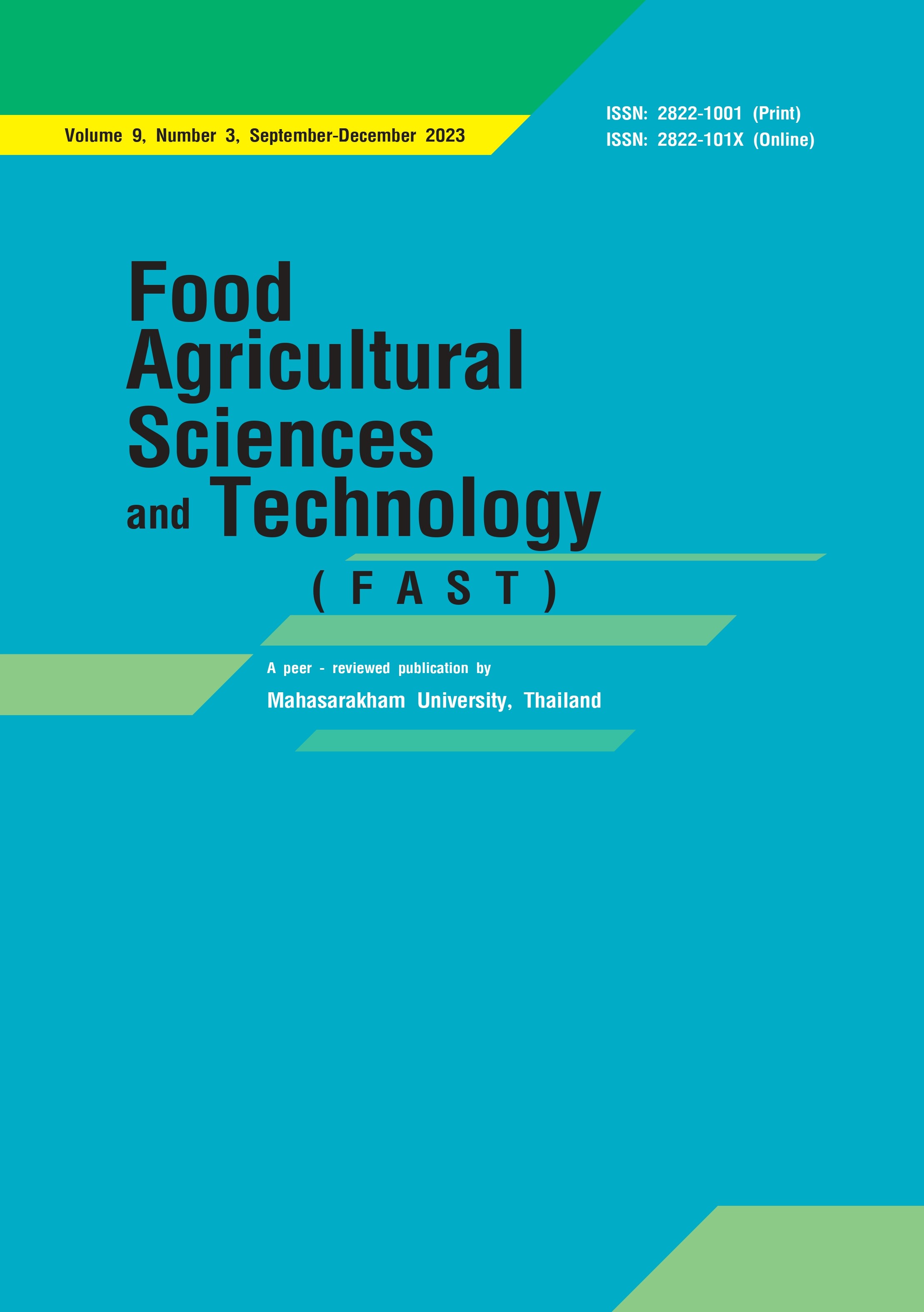Cytogenetics of Pisang Awak (Kluai Namwa Tanao Sri) from Suan Phueng district, Thailand
Keywords:
Kluai Namwa Tanao Sri, banana, chromosome, karyotypeAbstract
This research aims to study karyotype of Pisang Awak (Kluai Namwa Tanao Sri, Musa × paradisiaca L.) from Suan Phueng district, Ratchaburi province. Chromosomes were obtained directly from the root tip and fixed roots; meristem cells were stained with acetocarmine dye which were then photographed under a light microscope for cells that were in the metaphase stage. Excel and the Adobe Photoshop CS5 application were used to analyze the data and display ideograms. The chromosome numbers of Musa × paradisiaca L. is 3n = 33 (x = 11), metacentric, submetacentric and acrocentric chromosome are commonly observed. The chromosome range length was reported between 0.742- 1.697 μm, karyotype comprising three large submetacentric, six large acrocentric, six medium metacentric, nine medium submetacentric, three medium acrocentric, three small metacentric and three small submetacentric chromosome, respectively. The karyotype formula of Kluai Namwa Tanao Sri (Musa × paradisiaca L.) as follows: 3n (33) = Lsm 3 + La 6 + Mm 6 + Msm 9 + Ma 3 + Sm 3 + Ssm 3
References
Chaiyasut, K. (1989). Cytogenetics and cytotaxonomy of the family zephyranthes. Chulalongkorn University.
Chapman, G.P. (1970). Pattern of change in tropical plants. University of London Press.
Chessman, E.E., & Larter, L.N.H. (1935). Genetical and cytological studies of Musa III. chromosome number in the Musaceae. J. Gent., 30, 31-52.
Ferreira, C.F., Silva, S.O., Sobrinho, N.P.D., Cristina, S., Damascena, S., Alves, F., & da Paz, O.P. (2004). Molecular characterization of banana (AA) diploids with constrasting levels of black andyellow sigatoka resistance. Amer. J. of Applied Sci., 1(4), 276-278.
Flora to china. (2000). Flora to China. http:// www.efloras.org/volume_page. aspx?volume_id=2024&flora_id=2
Harrison, J.S., & Schwarzacher, T. (2007). Domestication genomics and future for banana. Annals of Bot., 100(5), 1073-1084.
Hribova, E., Dolezelova, M., & Dolezel, J. (2008). Localization of BAC clones on mitotic chromosome of Musa acuminata using fluorescence in situ hybridization. Biologia Plantarum, 52(3), 445-452.
Hutchingson, D.J. (1966). Notes on bananas II chromosome counts of Varieties. Trop. Agriculture., 43(2), 131-132.
Oselebe, H.O., Tenkouano, A., & Pillay, M. (2006). Ploidy variation of Musa hybrids from crosses. Afr. J. of Biotech., 5(11), 1048-1053.
Phengchang, P., Silayoi, B., Babpraserth, C., & Wongpiyasatid, A. (2009). Karyotype of some bananas in AA and AAA groups in Thailand. Thai Agricultural Research Journal, 27(3), 244-255.
Pursglove, J.W. (1978). Musacae. tropical crop monocotyledon I and II. Longman. Silayoi, B., & Babpraserth, C. (1983). Banana genetic resource exploration in Thailand. Rpt. IBPGR, Kasetsart University.
Silayoi, B., & Sompen, P. (1991). Chromosome numbers and karyotypes of some Thai bananas. Kasetsart Journal, 25, 400-407.
Simmonds, N.W., & Shepherd, K. (1955). The taxonomy and origin of the cultivated bananas. J. Linn. Soc. (Bot), 55, 302-317.
Downloads
Published
How to Cite
Issue
Section
License
Copyright (c) 2023 Food Agricultural Sciences and Technology

This work is licensed under a Creative Commons Attribution-NoDerivatives 4.0 International License.








